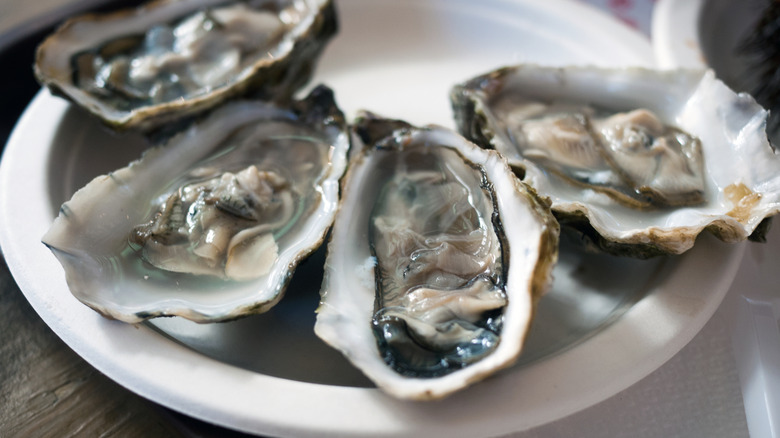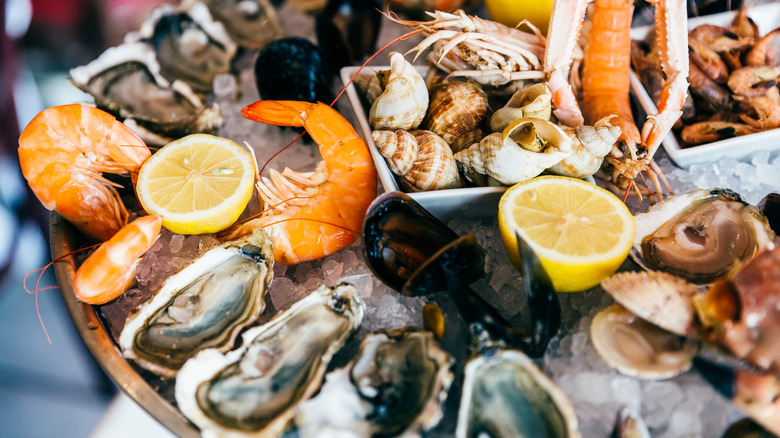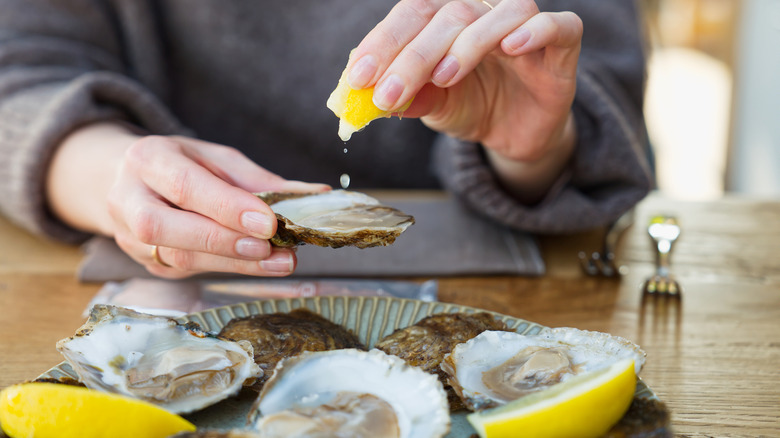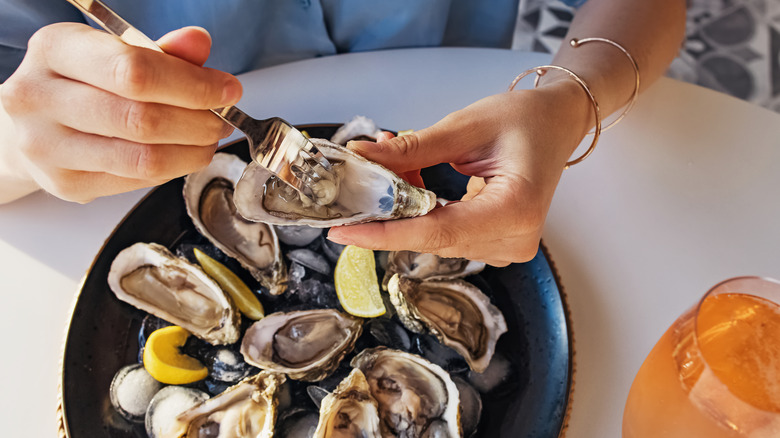Should We Really Be Eating Raw Oysters?
In my eyes, all shellfish are magical. Maybe it's because I grew up in the Midwest, where saltwater seafood is harder to come by, or maybe it's just the mysterious makeup of these organisms (and the pearls you might find inside), or maybe it's just because they taste so uniquely delicious. Oysters, mussels, clams, scallops — they're all No. 1 in my book. But why are oysters eaten raw, while the default preparation for all other shellfish seems to involve cooking them?
The risk of eating raw shellfish
Well, it turns out we really shouldn't be eating any of these critters raw. According to the CDC, eating raw oysters or even undercooked seafood puts the eater at risk for infections like vibriosis, which essentially manifests as a really bad case of food poisoning. The only way to be certain there's no vibrio bacteria in your oysters, clams, or mussels is to cook them properly.
And no, spritzing your oyster with lemon or dousing it in hot sauce doesn't count as cooking it properly. No amount of mignonette will make your raw oysters completely safe.
Your raw oyster may actually still be alive
If raw oysters are so dangerous, how are so many restaurants able to serve them? Well, the CDC says that some oysters are treated for safety after being harvested, and those are most likely the ones that will be served raw, but again, the risk for infection is never zero.
The bacteria builds more quickly once the oyster itself is dead, so to combat that excess of bacteria restaurants will serve you raw oysters as fresh as possible — yes, that means the oyster you're slurping might still be breathing. And this can be true at landlocked restaurants as well, because shellfish can live for up to two weeks without water.
Why people eat oysters raw, despite the risks
Unlike clams, mussels, and scallops, all of which maintain their buttery, meaty texture when lightly steamed or baked or seared, the appeal of an oyster sits in its briny, slimy glory, all of which is lost when cooked, and people aren't always willing to let go of that taste. Plus, the oyster (and its half shell) acts as the perfect vessel for slurping a delicious combination of cocktail sauce, vinegar, and lemon that is not yet acceptable as a standalone drink for whatever reason.
Much like their shelled brethren the lobster, raw oysters have also come to be symbolic of wealth and class. Like the lobster, oysters started as a widely available "poor man's snack," but overfishing and water pollution in the industrial age soon made the supply dwindle. As the treat became more and more rare, the demand for oysters as a luxury item went up, and now the market can never really go back without disappointing billionaires everywhere.
But that doesn't mean raw is the only way to enjoy oysters. You can grill 'em, you can bake 'em – heck, you can even eat some pretty tasty ones right out of the can. Just think twice next time you hit a raw bar and decide if the potential infection is worth it, and remember, cooked mussels, clams, and scallops are just as good.



